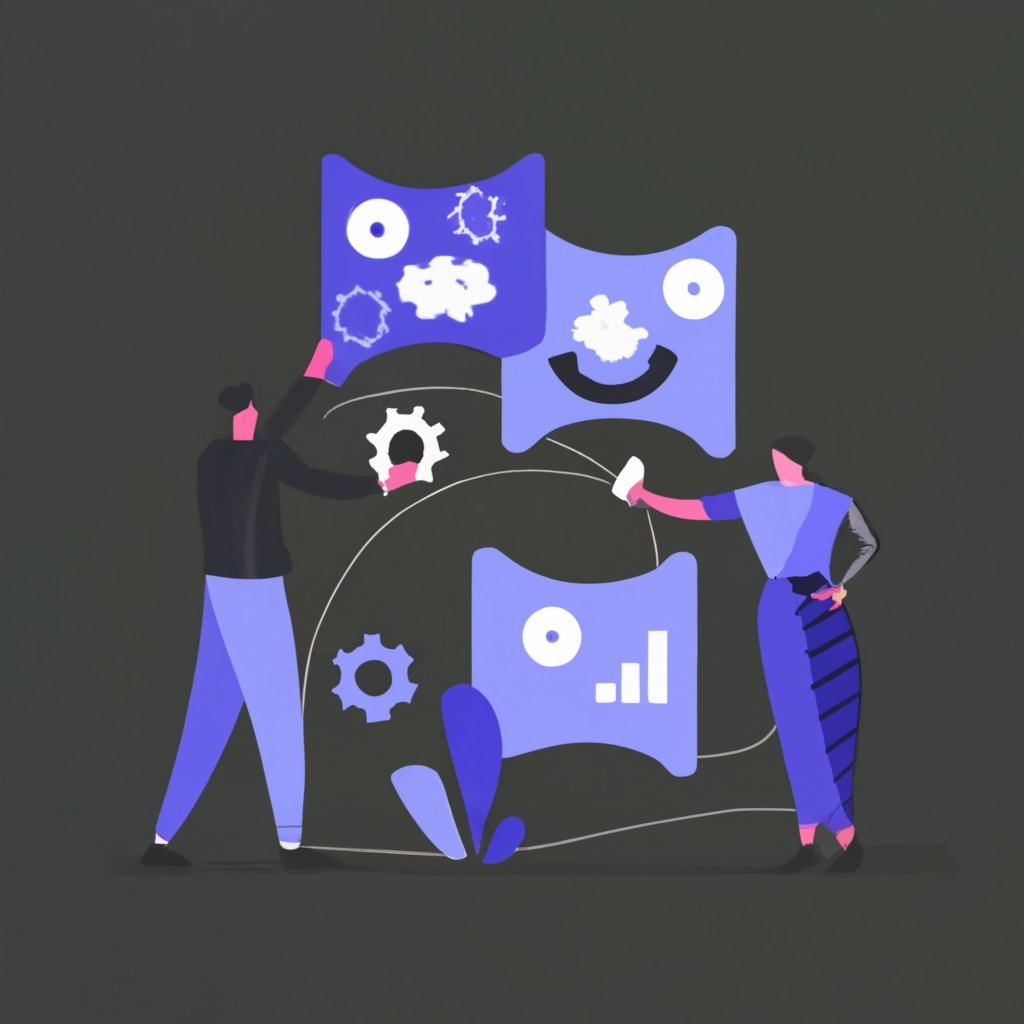The ADKAR change management model is a framework used to understand and facilitate individual and organizational change. Developed by Jeff Hiatt, the founder of Prosci, the model provides a structured approach to managing change and ensuring successful outcomes.
The model is based on five key elements: awareness, desire, knowledge, ability, and reinforcement. These elements represent the stages that individuals typically go through when faced with change, and can be used to identify potential obstacles and areas for improvement. By addressing each element in turn, organizations can create a clear roadmap for change that takes into account the needs and concerns of all stakeholders.
The ADKAR model has become increasingly popular in recent years as organizations seek to navigate the complex landscape of change management. Its focus on individual change as well as organizational change makes it a valuable tool for any organization looking to implement change successfully. In the following sections, we will explore the ADKAR model in more detail, including its key components and how it can be applied in practice.

Understanding The Adkar Change Model
The ADKAR model is a change management framework that helps individuals and organizations navigate changes in a structured and systematic way. The model is based on five key elements: Awareness, Desire, Knowledge, Ability, and Reinforcement.
Awareness is the first step in the ADKAR model. It involves understanding the need for change and the reasons behind it. This step is critical because it sets the foundation for the rest of the model. Without awareness, there can be no desire to change.
Desire is the second step in the model. It involves creating a desire to change by understanding the benefits of the change and what is at stake if the change does not occur. Creating a sense of urgency and excitement is crucial in this step to motivate individuals to move forward.
Knowledge is the third step in the model. It involves providing the necessary information and training to ensure that individuals have the knowledge and skills required to make the change successfully. This step is critical to ensure that individuals are confident in their ability to make the change.
Ability is the fourth step in the model. It involves providing the necessary resources and support to enable individuals to make the change successfully. This step is critical to ensure that individuals have the tools and resources they need to make the change.
Reinforcement is the final step in the model. It involves providing ongoing support and recognition to ensure that the change is sustained and becomes a part of the organizational culture. This step is critical to ensure that the change becomes a lasting part of the organization.
The ADKAR model is outcome-oriented, focusing on the individual level rather than the organizational level. It is designed to help individuals move from their current state to a future state by addressing their individual needs and concerns.
In summary, the ADKAR model is a structured and systematic approach to change management. It focuses on the individual level and is designed to help individuals navigate change successfully. By following the five steps of the model, individuals can move from their current state to a future state with confidence and clarity.

Role of Adkar in Change Management
The ADKAR model is a change management methodology that helps individuals and organizations facilitate change in an effective way. The model focuses on five key elements: Awareness, Desire, Knowledge, Ability, and Reinforcement. These elements are designed to help individuals and organizations understand the change process, set goals, and achieve them.
Change management practitioners use the ADKAR model to guide their change management activities. The model helps them identify the goals of the change process, understand the individual and organizational changes that are necessary, and develop a methodology to achieve those goals. The ADKAR model also helps change leaders and senior leaders understand their role in the change process and how they can support the project team members.
The ADKAR model is particularly effective in facilitating individual change. It helps individuals understand the change process and the goals of the change. The model also helps them develop the knowledge and skills necessary to make the change. The reinforcement element of the model helps individuals sustain the change and make it a part of their daily routine.
The ADKAR model is also effective in facilitating organizational change. It helps organizations understand the goals of the change and the changes that are necessary. The model helps organizations develop a methodology to achieve those goals and identify the stakeholders who will be impacted by the change. The reinforcement element of the model helps organizations sustain the change and measure progress against milestones.
Resistance is a common challenge in change management. The ADKAR model helps change management practitioners and change leaders understand the reasons for resistance and develop strategies to address it. The model also helps employees understand the reasons for the change and how it will benefit them.
In conclusion, the ADKAR model is an effective change management methodology that helps individuals and organizations achieve their goals. It provides a clear framework for understanding the change process, setting goals, and achieving them. The model is particularly effective in facilitating individual and organizational change and addressing resistance.
Implementing Adkar Model
Implementing the ADKAR model requires a comprehensive approach that involves training, education, and communication. The model emphasizes the importance of building skills and confidence among employees to ensure that they are ready to embrace change.
Training and education are critical components of the ADKAR model. Employees must be given the tools and knowledge they need to understand the change and how it will impact their work. This includes training on new processes, systems, and technologies that will be introduced as part of the change.
Communication is also essential to the success of the ADKAR model. Leaders must communicate the change effectively and provide regular updates to ensure that employees are informed and engaged throughout the process. Feedback is also critical to ensure that employees have a voice in the change and can provide input on how it is implemented.
Buy-in from employees is another critical component of the ADKAR model. Leaders must work to build support for the change and ensure that employees understand the benefits of the change. This can be achieved through clear communication, incentives, and other best practices that help to build enthusiasm and support for the change.
Finally, the ADKAR model emphasizes the importance of addressing the people side of change. This involves building confidence among employees and ensuring that they have the skills and support they need to succeed in the new environment. Leaders must work to identify and address any concerns or challenges that employees may face during the change process to ensure that they can adapt and thrive in the new environment.
Overall, implementing the ADKAR model requires a comprehensive approach that addresses training, education, communication, buy-in, and the people side of change. By following best practices and building support among employees, leaders can ensure that the change is successful and that productivity is maintained throughout the process.

Evaluating Success with Adkar
Measuring the success of change management initiatives is essential to ensure that the organization is achieving its desired outcomes. The ADKAR model provides a structured approach to evaluating the success of change management initiatives.
One of the critical components of the ADKAR model is measuring progress against each of the five stages. This measurement allows organizations to identify areas where they need to focus their efforts to ensure that the change initiative is successful.
Feedback is also an essential element of evaluating success with the ADKAR model. Organizations need to collect feedback from employees and stakeholders to understand how the change initiative is affecting them. This feedback can help organizations identify areas where they need to adjust their approach to ensure that the change initiative is successful.
The ADKAR model also emphasizes the importance of setting milestones to measure progress. These milestones allow organizations to track progress towards achieving their desired outcomes and make adjustments as necessary.
The ADKAR model is outcome-oriented, which means that organizations focus on achieving the desired outcomes rather than simply completing the change process. This outcome-oriented approach helps organizations ensure that the change initiative is successful and that they achieve their desired outcomes.
Finally, the ADKAR model emphasizes the importance of productivity. Organizations need to measure productivity to ensure that the change initiative is not negatively impacting their productivity. By measuring productivity, organizations can identify areas where they need to focus their efforts to ensure that the change initiative is successful.
Overall, the ADKAR model provides a structured approach to evaluating the success of change management initiatives. By measuring progress, collecting feedback, setting milestones, focusing on outcomes, and measuring productivity, organizations can ensure that their change initiatives are successful and that they achieve their desired outcomes.
ADKAR Change Management
1. What is the ADKAR Change Management Model?
The ADKAR Change Management Model is a framework developed by Jeff Hiatt, focusing on individual and organizational change. It’s based on five key elements: Awareness, Desire, Knowledge, Ability, and Reinforcement, which are stages individuals typically go through during change.
2. How does the ADKAR Model facilitate change?
The model addresses each stage—awareness, desire, knowledge, ability, and reinforcement—in turn, creating a roadmap for change. It considers the needs and concerns of all stakeholders, making it a valuable tool for successful change implementation.
3. What are the key components of the ADKAR Model?
The key components are:
- Awareness: Understanding the need for change.
- Desire: Creating a desire to participate and support the change.
- Knowledge: Providing information and training to achieve change.
- Ability: Ensuring the capability to implement the change.
- Reinforcement: Sustaining the change by embedding it in culture.
4. What is the role of ADKAR in Change Management?
ADKAR is used by change management practitioners to set goals, understand necessary changes, and develop methodologies to achieve these goals. It aids in understanding the change process, addressing resistance, and ensuring effective individual and organizational change.
5. How is the ADKAR Model implemented?
Implementation involves training, education, communication, employee buy-in, and addressing the people side of change. It’s crucial to provide necessary resources and support, along with effective communication and feedback mechanisms.
6. How do you evaluate success with the ADKAR Model?
Success is measured by progress against each stage of the model, feedback from employees and stakeholders, setting and achieving milestones, focusing on outcomes, and ensuring productivity is maintained or enhanced.
7. Why is the ADKAR Model outcome-oriented?
The focus on outcomes ensures that the change achieves its intended results rather than just completing the process. This approach aligns change initiatives with organizational goals and desired outcomes.
8. How does ADKAR handle resistance to change?
ADKAR helps in understanding the reasons for resistance and developing strategies to address them. It involves engaging employees in the process, clarifying benefits, and providing necessary support and reinforcement.
9. Can ADKAR be applied to any organization?
Yes, ADKAR is versatile and can be applied to various organizational sizes and industries. Its focus on individual change makes it adaptable to different organizational cultures and structures.
10. What are the benefits of using the ADKAR Model?
Benefits include structured and systematic change management, enhanced employee engagement and support for change, effective handling of resistance, and improved chances of sustainable change success.
Recent Posts
Understanding Time Feature ReleaseConcept of Time in Product RoadmapsImportance of Timing for Feature ReleasesPlanning the RoadmapSetting Strategic GoalsIdentifying Key MilestonesPrioritizing...
Portfolio Kanban: A Powerful Tool for Effective Portfolio Planning
Fundamentals of Portfolio KanbanDefining Portfolio KanbanKey Principles of Portfolio PlanningBenefits of Portfolio KanbanSetting Up a Portfolio Kanban SystemIdentifying Portfolio ItemsVisualizing the...

